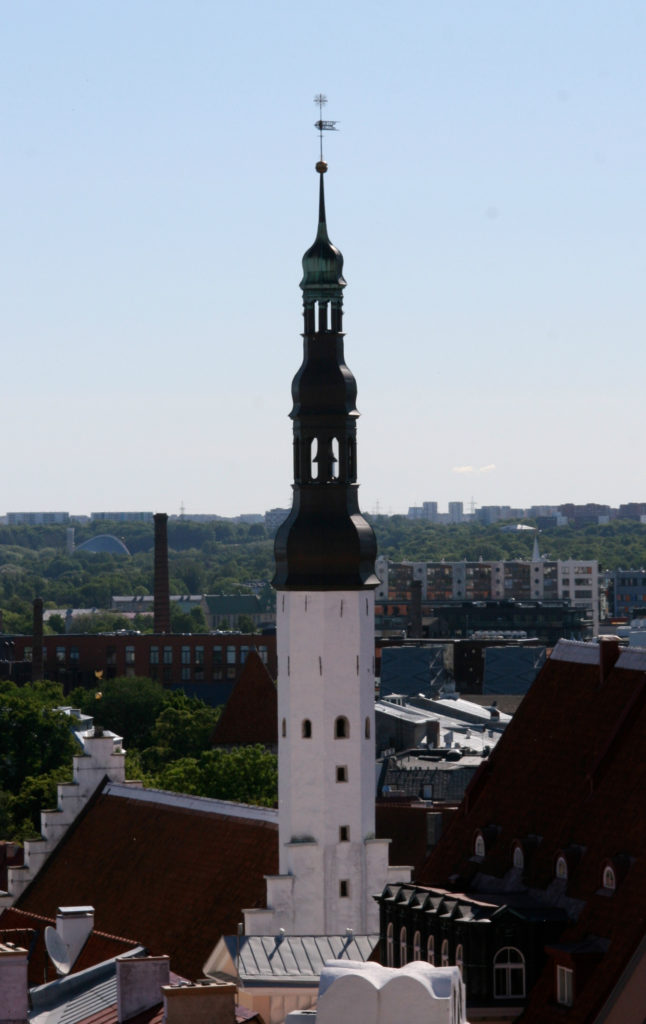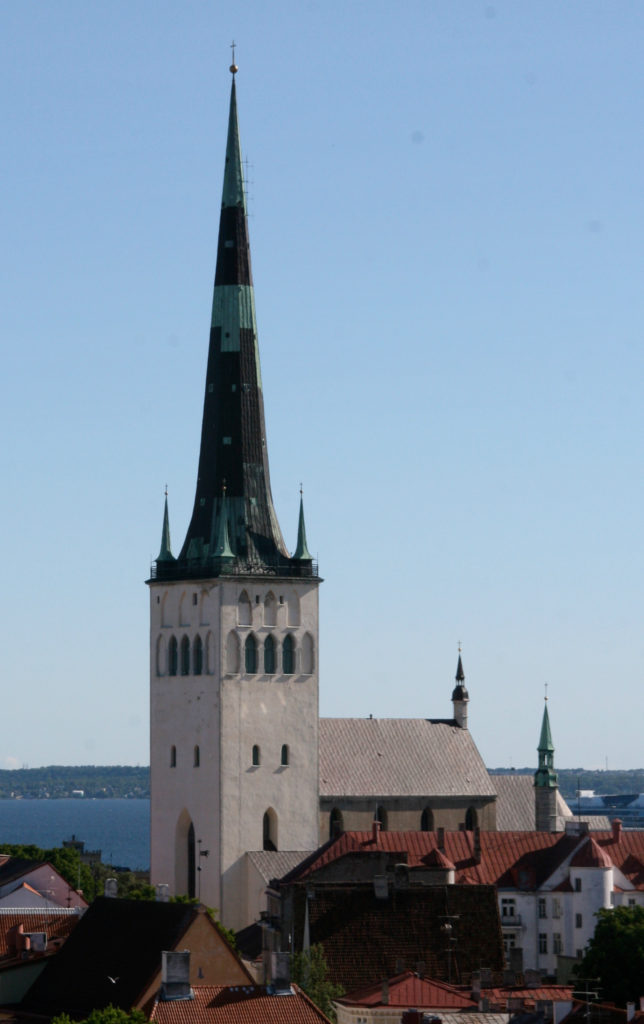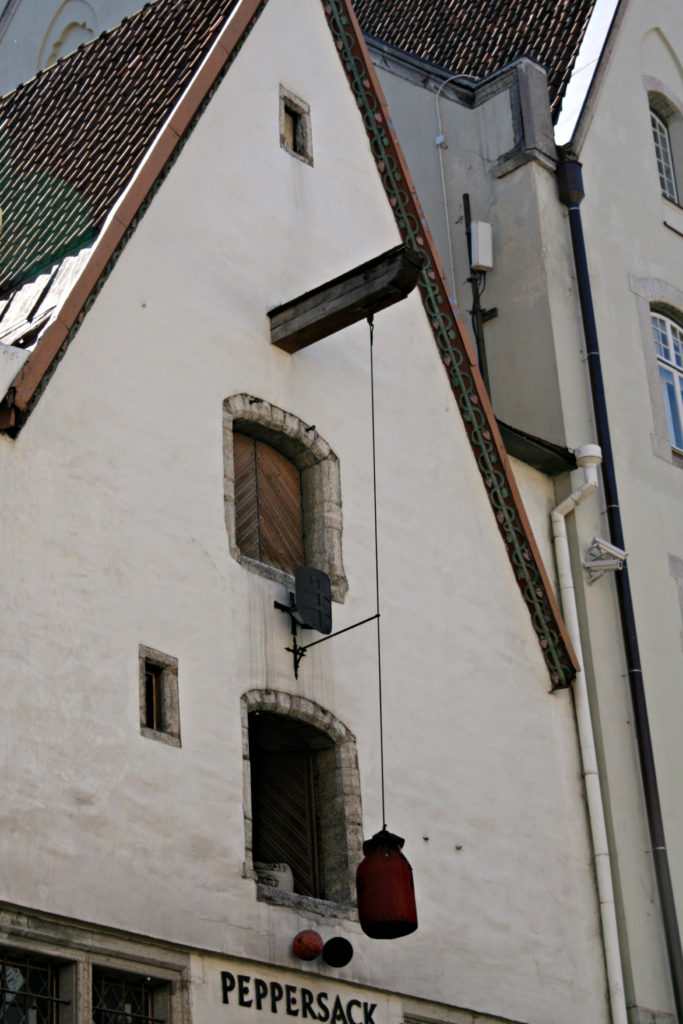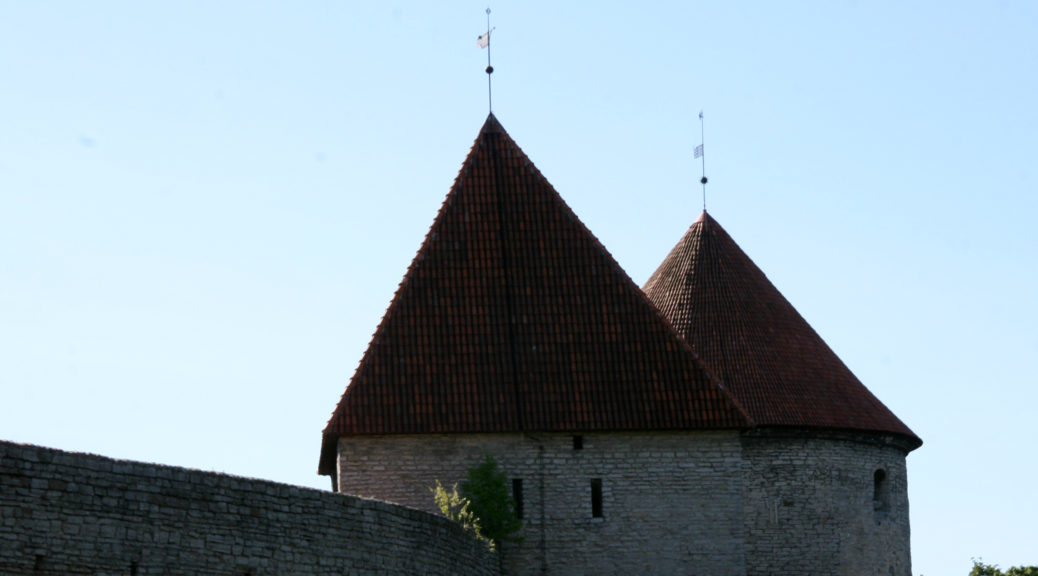
Tallinn, Estonia
After leaving St. Petersburg, we were headed to Tallinn, Estonia. We really didn’t know much about Estonia and thought it was probably a convenient stop between St. Petersburg and our port in Poland. But Estonia was much more – we could only spend a few hours here as we were due back on the ship around lunchtime. For our shore excursion, we chose a walking tour that would give us an overview of Tallinn.
Estonia likely dates back to the 10th Century. It is believed that there was a reference to Tallinn by an Arabian geographer in 1154. The first settlement was at Toompea Hill, an area probably chosen for defense reasons. But Estonia lost its independence to Denmark in 1219. Other countries would also rule Estonia including Germany, Sweden and Russia. Estonia finally regained its independence briefly after World War I. In 1940, Russia gave an ultimatum to Estonia, Latvia and Lithuania. Estonia accepted the ultimatum allowing Russian troops in the country and establishing a pro-Soviet government. Estonia finally became independent again in 1991. Our guide told us that through the years, Estonia was open to negotiations versus going into battle which likely resulted saving lives and preserving many of the historic buildings that might otherwise have been bombed.
Tallinn is a UNESCO World Heritage Site. This is a brief description from their site:
The upper town (Toompea) with the castle and the cathedral has always been the administrative centre of the country, whereas the lower town preserves to a remarkable extent the medieval urban fabric of narrow winding streets, many of which retain their medieval names, and fine public and burgher buildings… The Outstanding Universal Value of the Historic Centre (Old Town) of Tallinn is demonstrated in its existence as an outstanding, exceptionally complete and well preserved example of a medieval northern European trading city that retains the salient features of this unique form of economic and social community to a remarkable degree.
https://whc.unesco.org/en/list/822
The first picture below is one we took as we approached Estonia on our cruise ship. I have also included two pictures of a statue of an angel. The statue was originally a monument to a Russian training ship which sank in a storm in 1893. The site of the monument was where families would gather to see off sailors when they departed the harbor. Today the angel is seen as blessing all the ships that leave Tallinn.
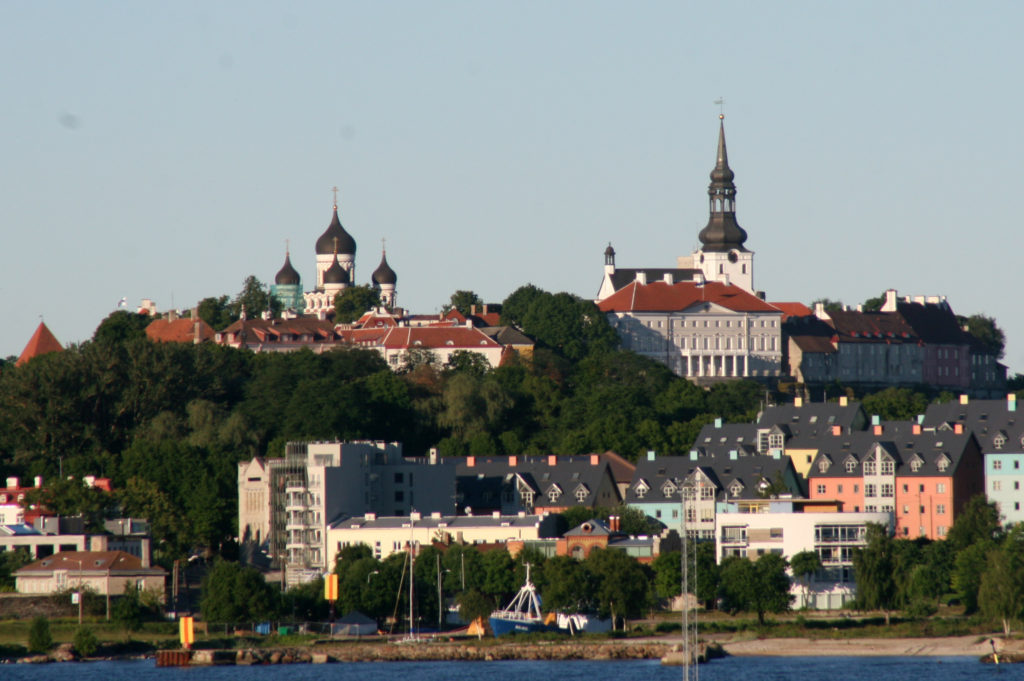
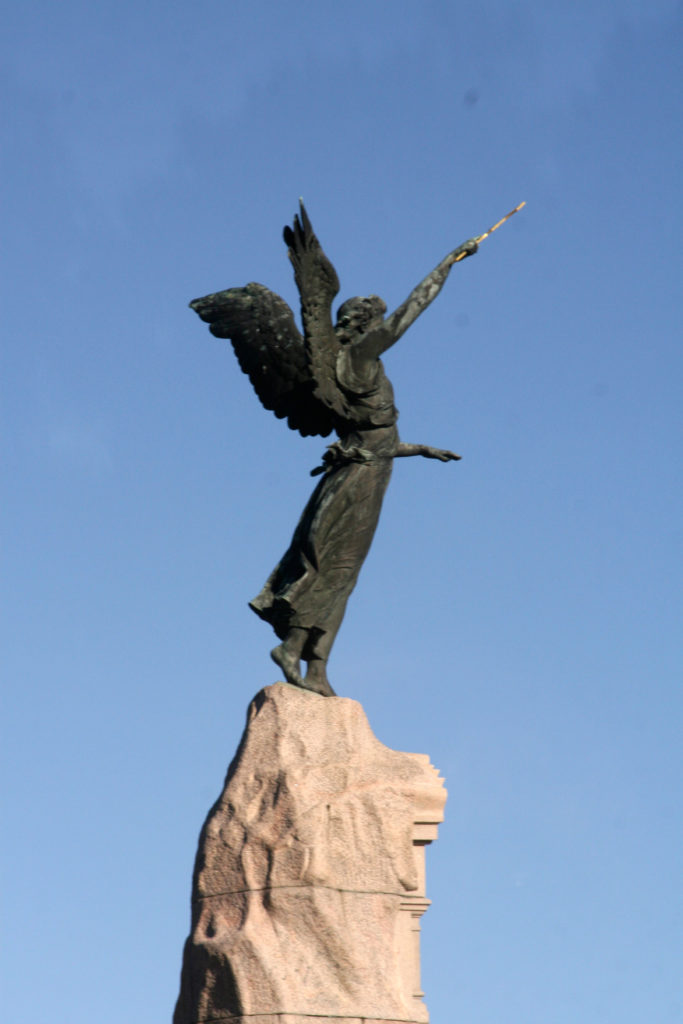
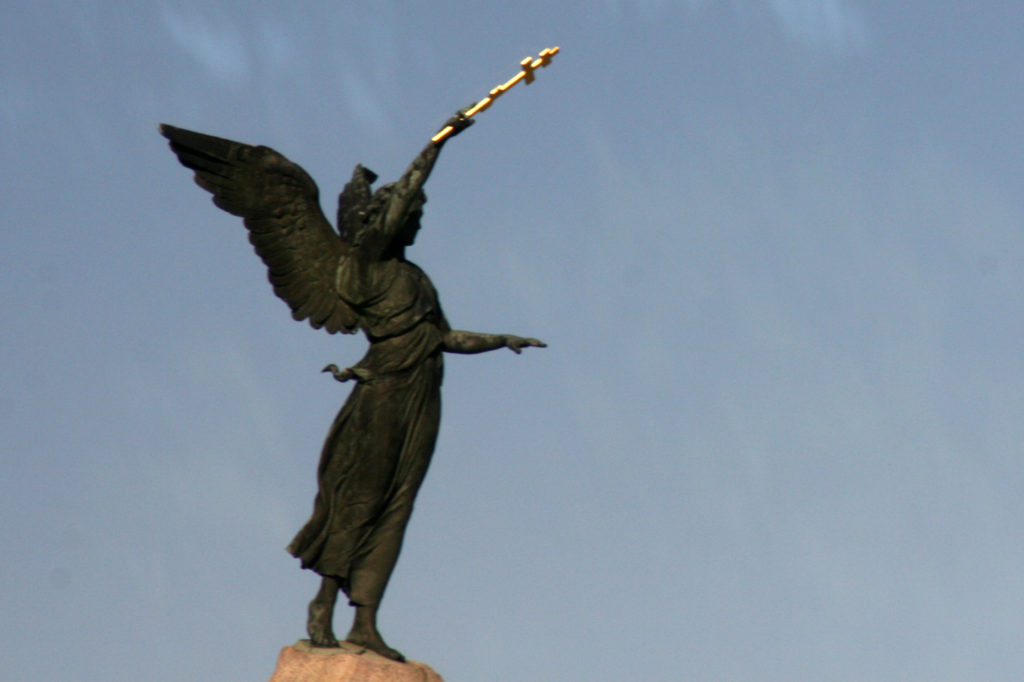
Fortification walls and towers were built beginning in the 13th Century. By the middle of the 14th Century, walls surrounded the entire settlement. The walls are about eight feet thick. Originally the towers had flat roofs from which catapults could be launched. The towers and walls were being constantly updated to keep up with advances in weaponry. By the 15th Century, the walls and towers look much like they do today. In the 16th Century, Tallinn was considered one of the best fortified cities in Europe. There were 66 towers – today only about 20 towers remain.
Pictured below are some of the towers, parts of the wall, passageways and one of the old town gates. Most of the towers are named. The square one in the first two pictures is known as the Maidens’ Tower and the round one is named Kiek-in-de-Kok. This is translated “Peek into the Kitchen” and was so named because guards could see into the windows of the homes below.
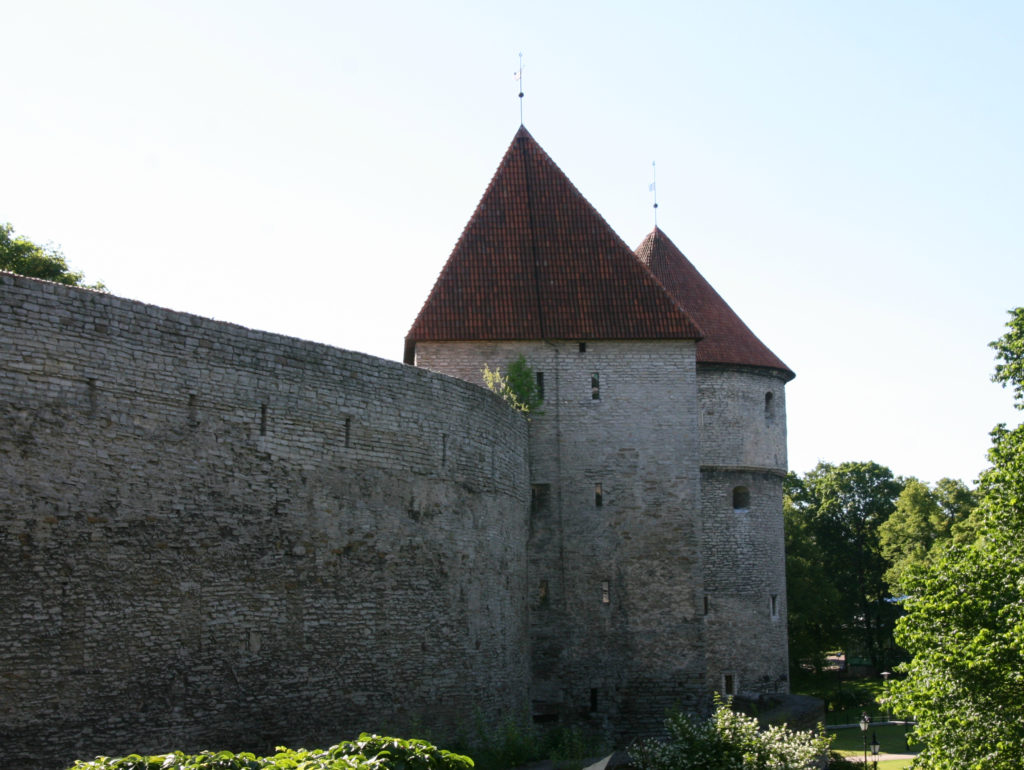
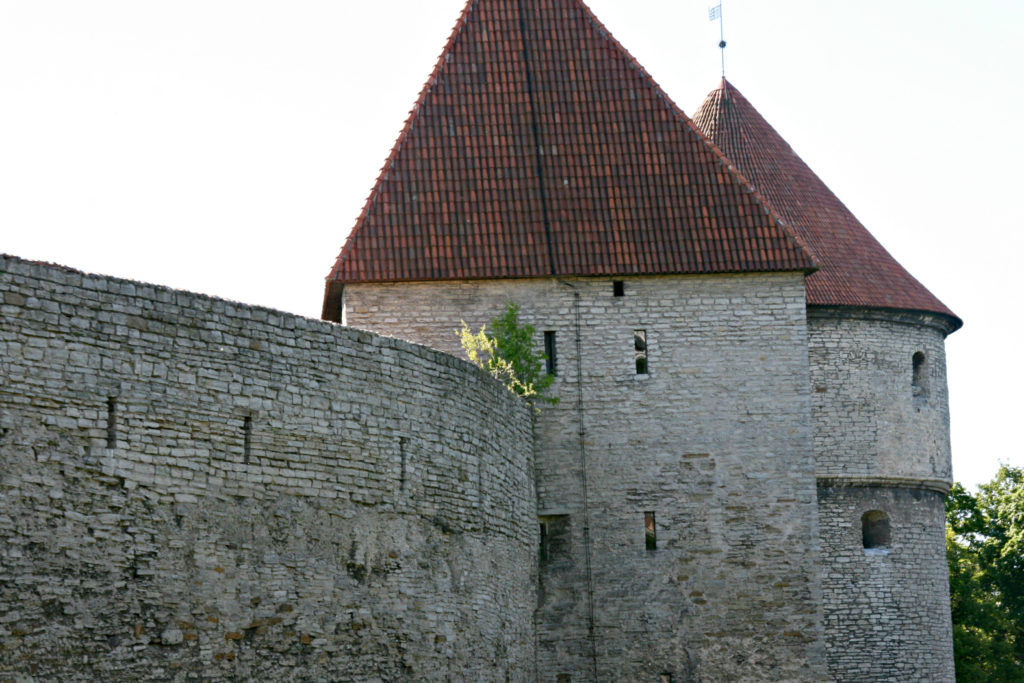
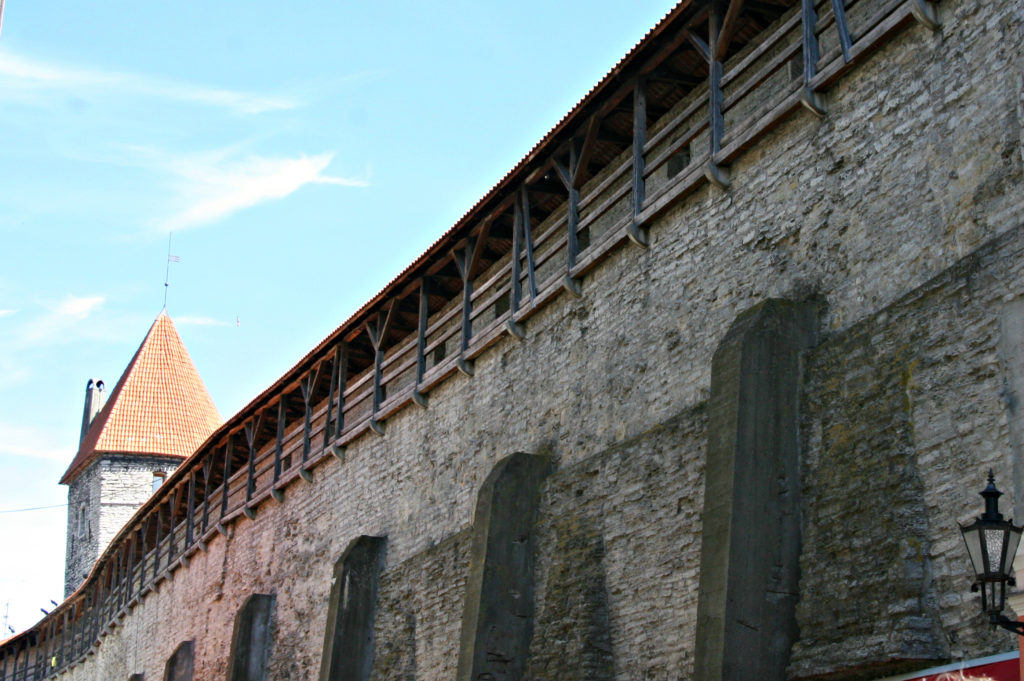
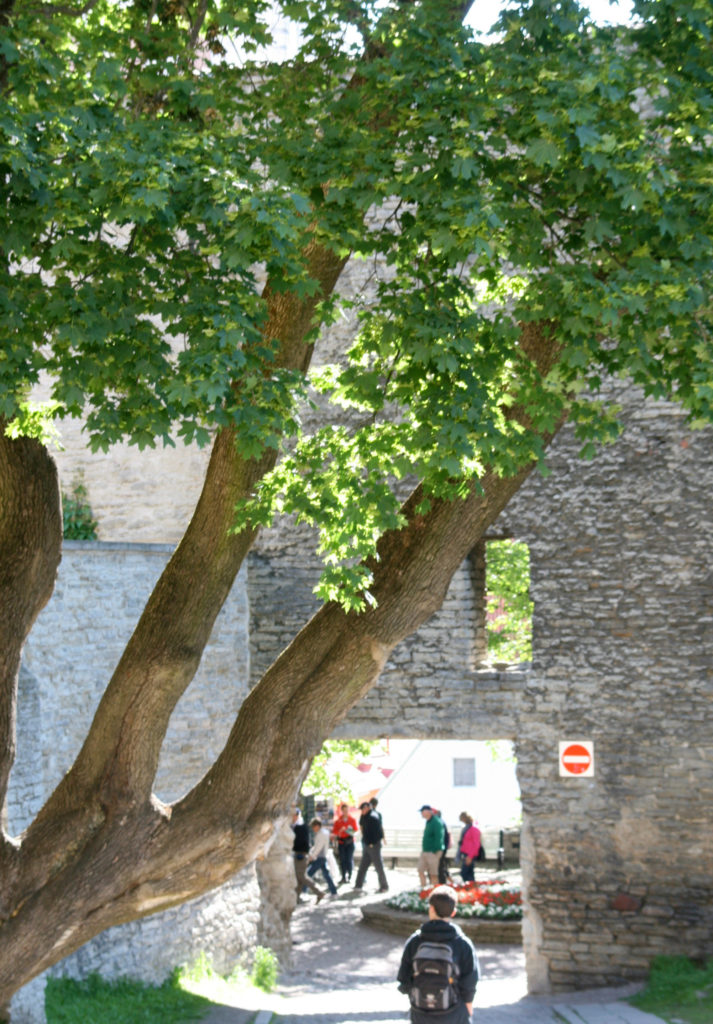
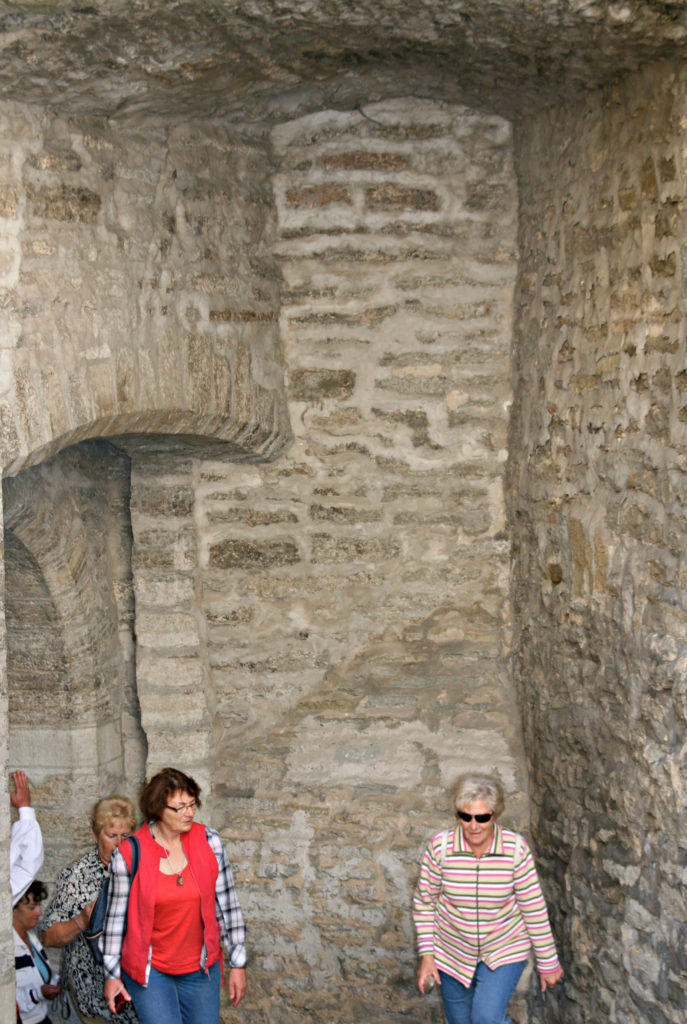
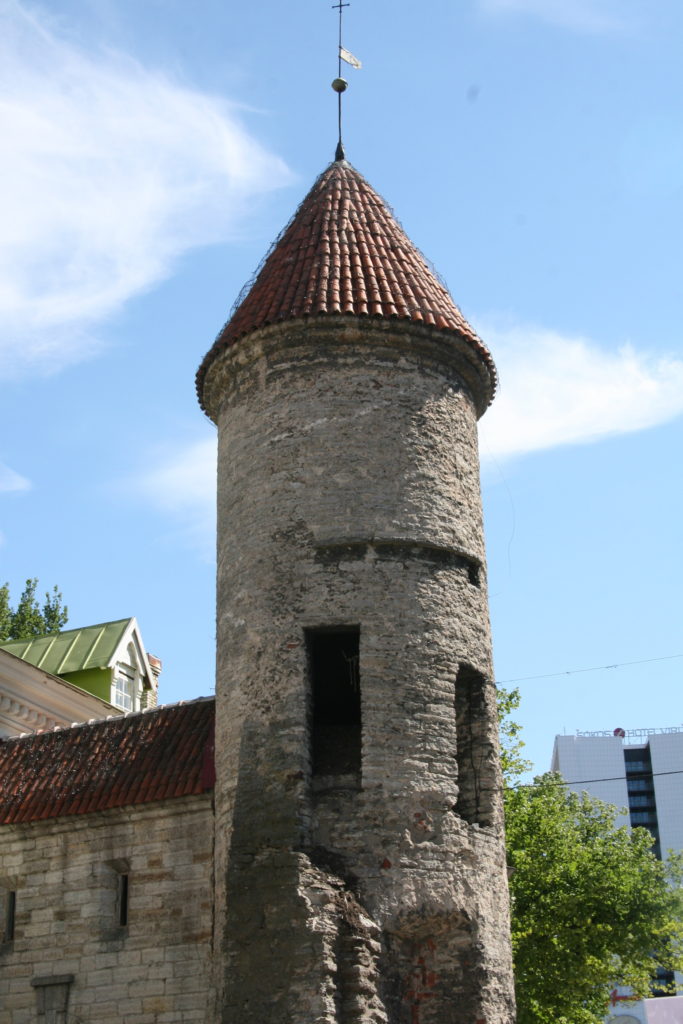
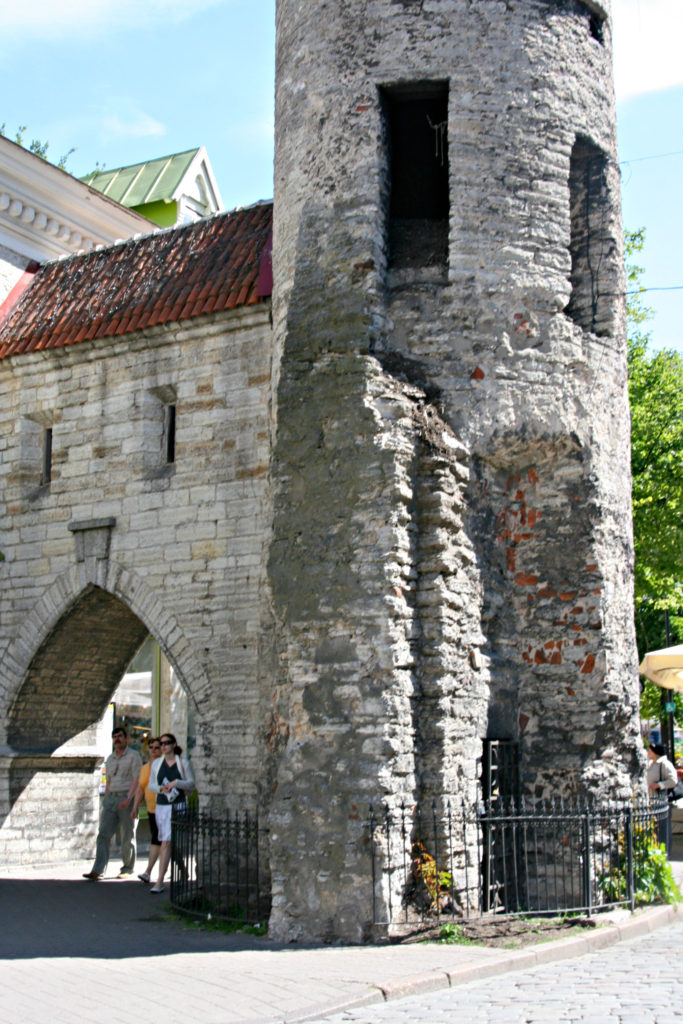
We also walked along the narrow cobblestone streets, an example of which can be seen in the first picture below. We saw a wheel well (second picture) on Rataskaevu Street that dates back to the 13th Century. According to legend, it is known as the Cat’s Well because in medieval times, some believed there were evil spirits in the well that would make the wells run dry. To appease the evil spirits, dead animals – mostly cats – were thrown into the well as a sacrifice. Needless to say, the well is no longer in use!!
The next pictures are of the Tallinn Town Hall Square. As you might imagine, there is lots of activity – in the summer there are outdoor restaurants, shopping and concerts. In the winter, it is the site of a Christmas market. Interestingly, in 1441, the Brotherhood of Blackheads (an organization of ship builders and merchants) erected what is believed to be the first ever Christmas tree in the square.
The white building in the fourth picture is the Town Hall Pharmacy. It was first mentioned in 1422 and has been serving as a pharmacy continuously since that time on this site. Because of the short amount of time we were in Tallinn, we were not able to go inside, but I learned there is a museum inside and the opportunity to try some herbal teas.
The fifth picture is of the Town Hall Tower. It was built between 1402 and 1404, at the same time as the Town Hall building. Soldiers once used this as a watch tower. A weather vane (sixth picture) on the Town Hall building is also pictured. The last picture in this section is of a dragon gargoyle which serves as a downspout on the Town Hall building.
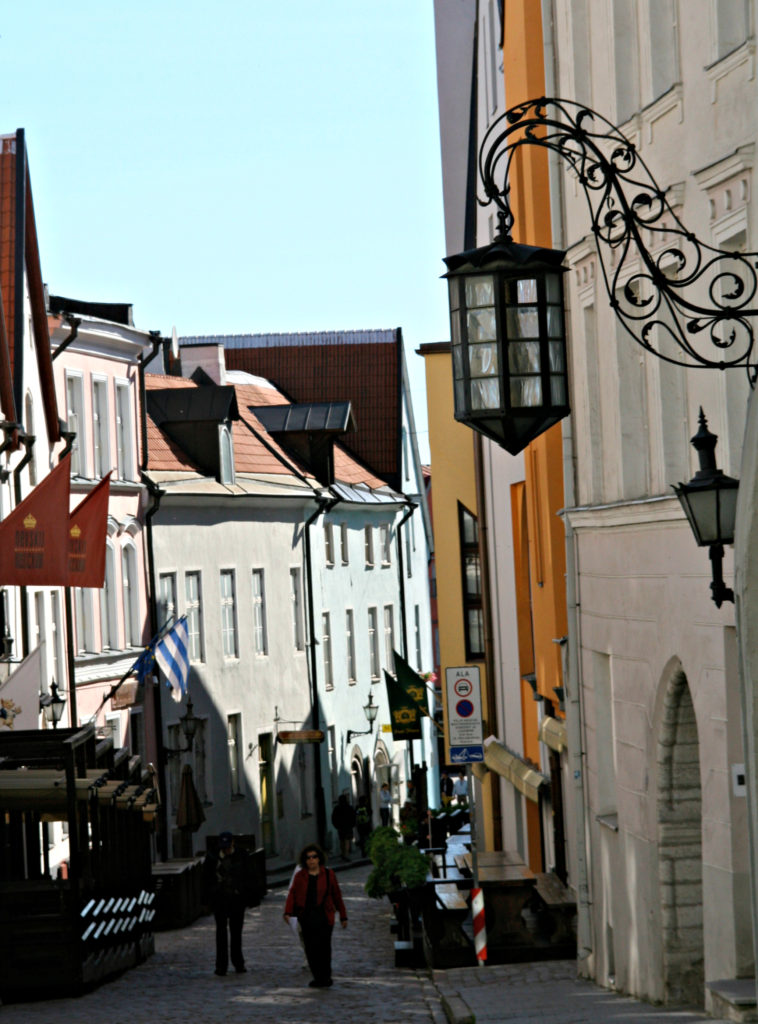
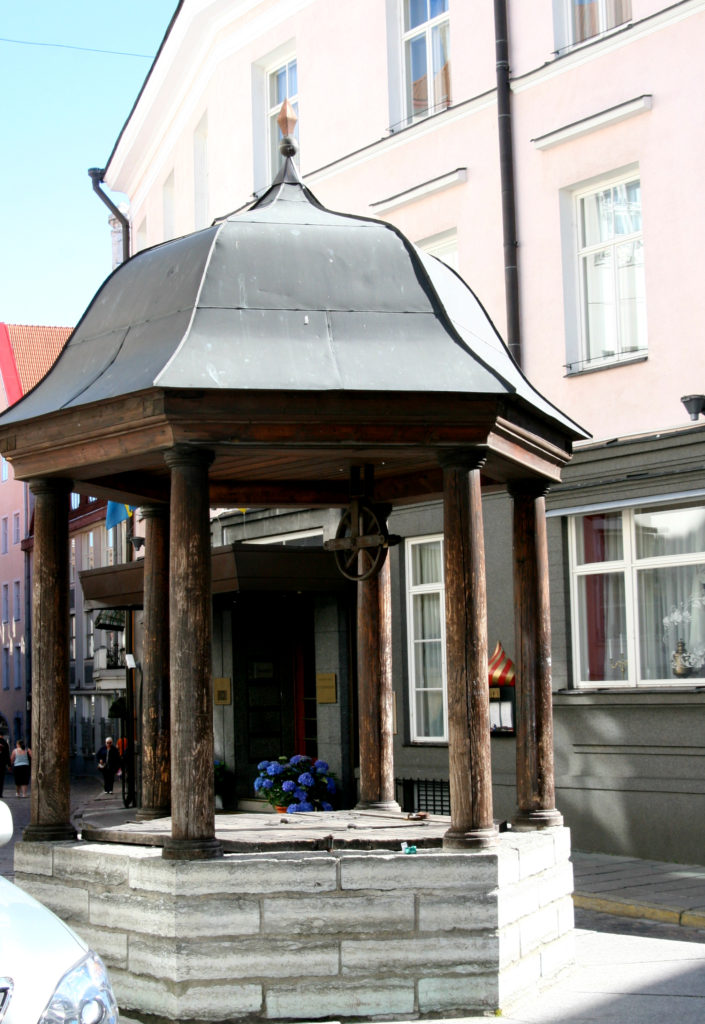
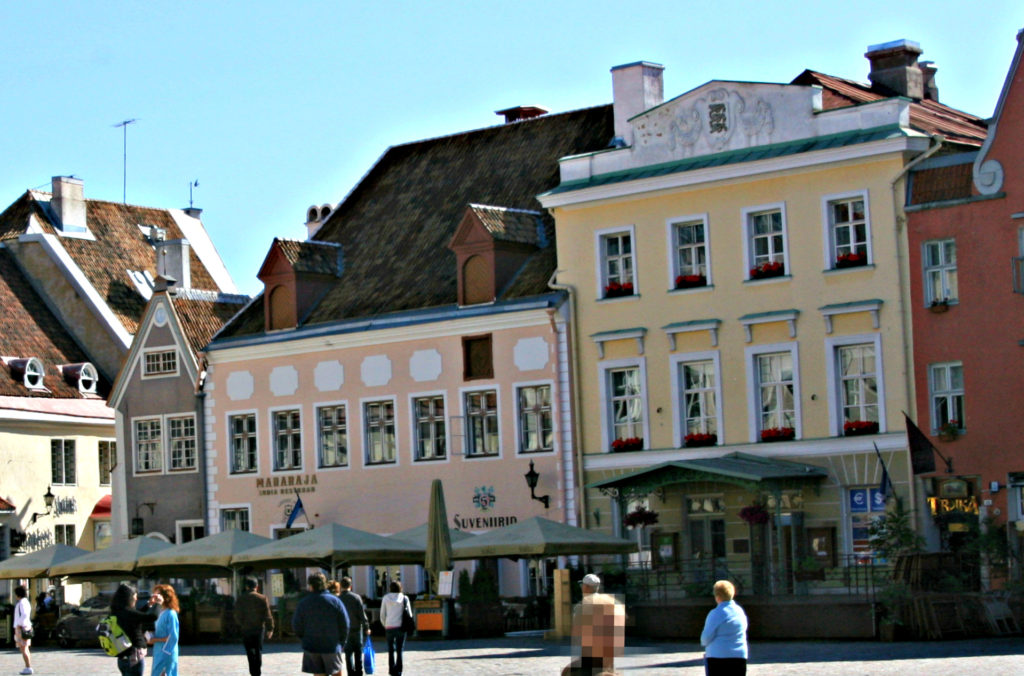
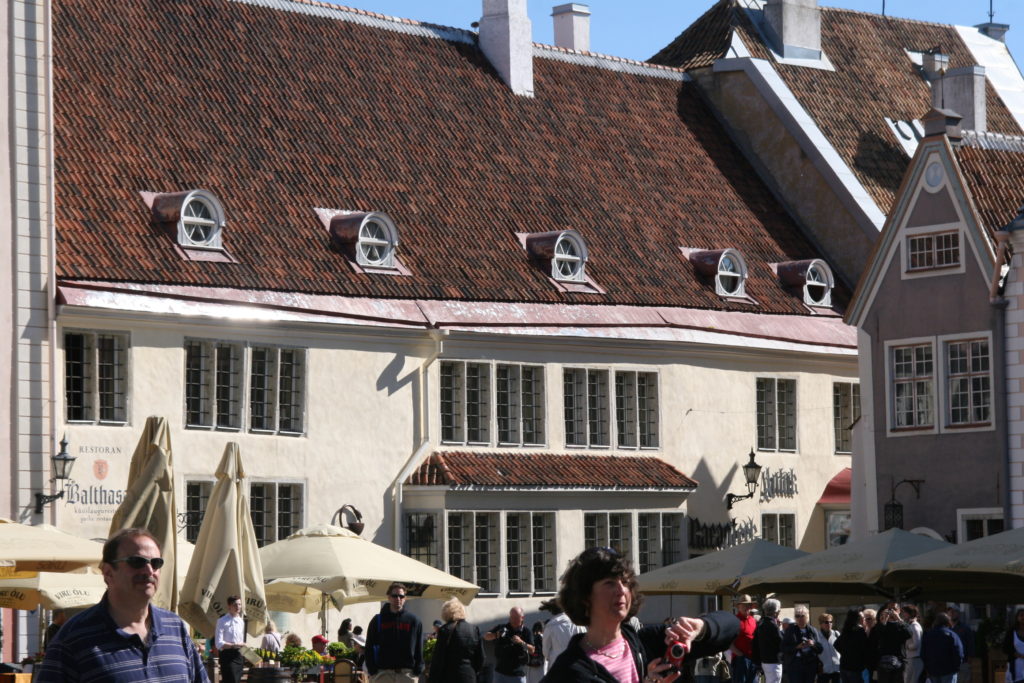
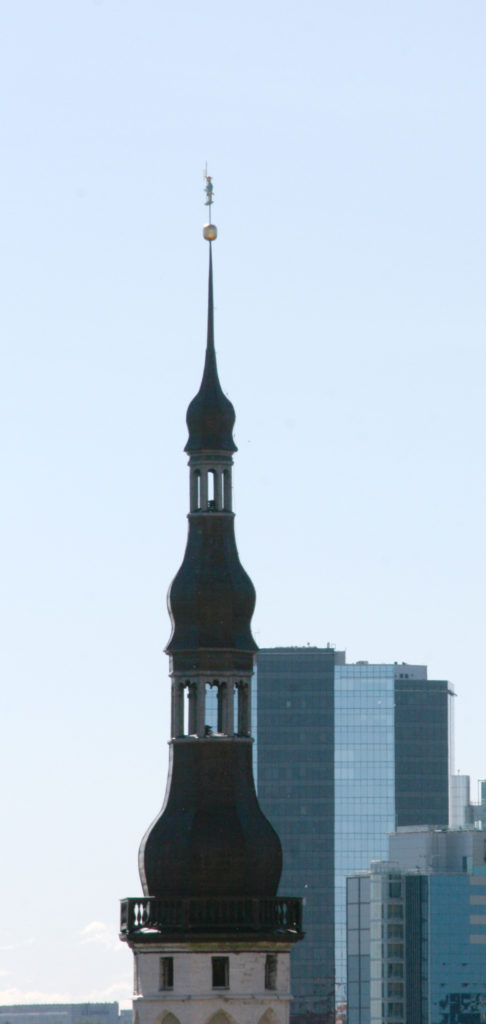
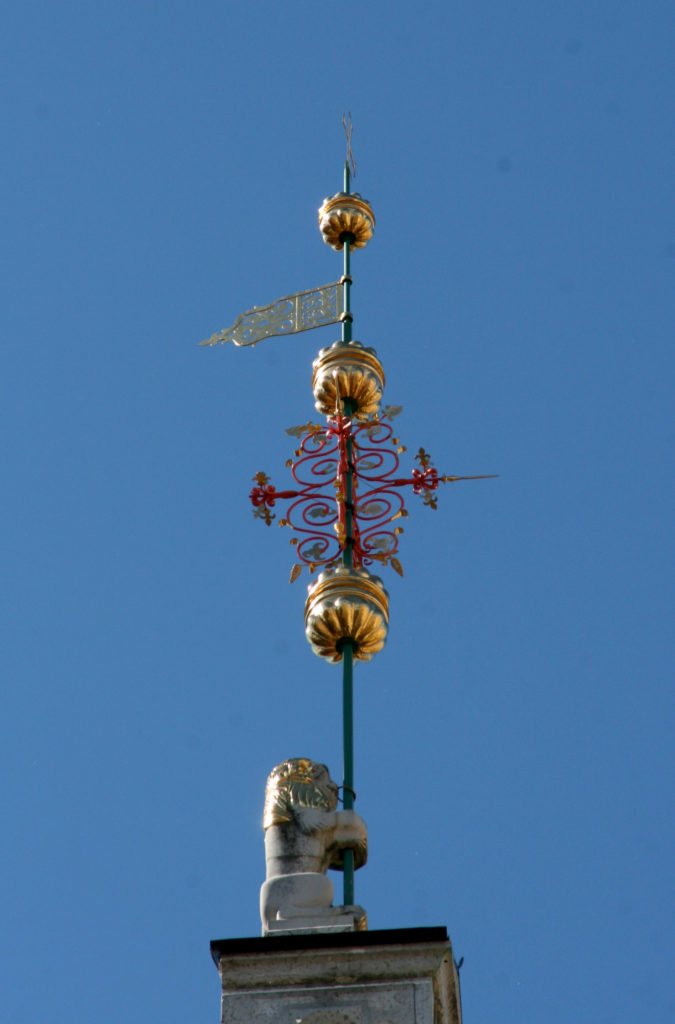
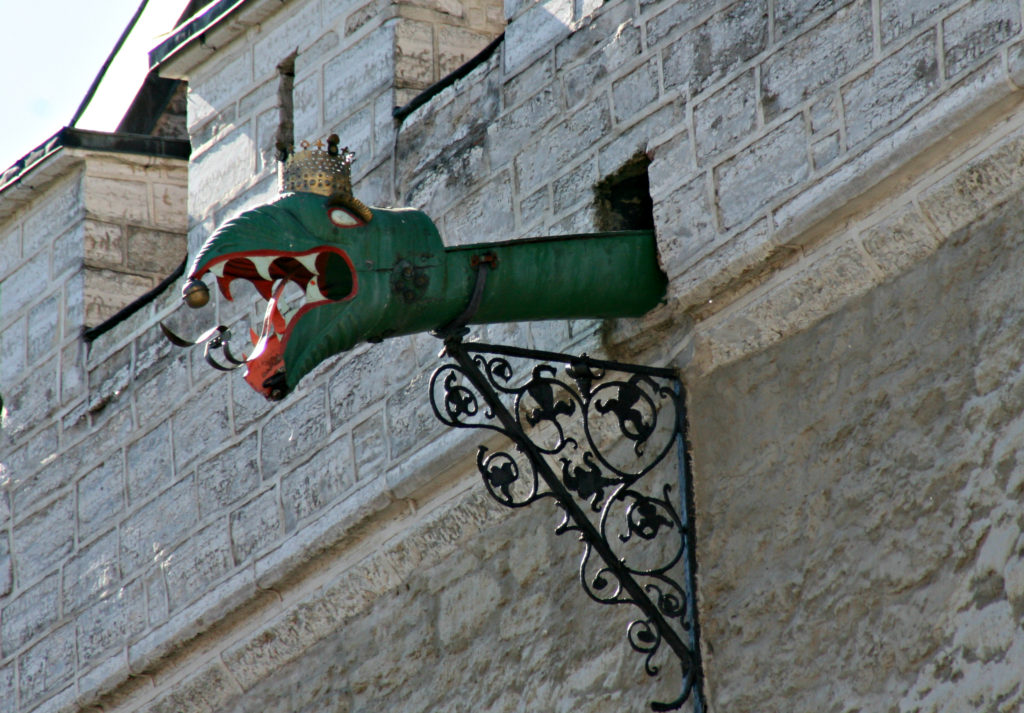
We also saw several churches. We were in Tallinn on a Sunday so we were not able to go inside some of the churches and pictures were not allowed. The church below is St. Alexander Nevsky Cathedral and is located in Upper Old Town of Tallinn. It was built in the 1800’s when Estonia was ruled by Russia. The architect was from St. Petersburg and the onion cupolas are indicative of the Russian influence.
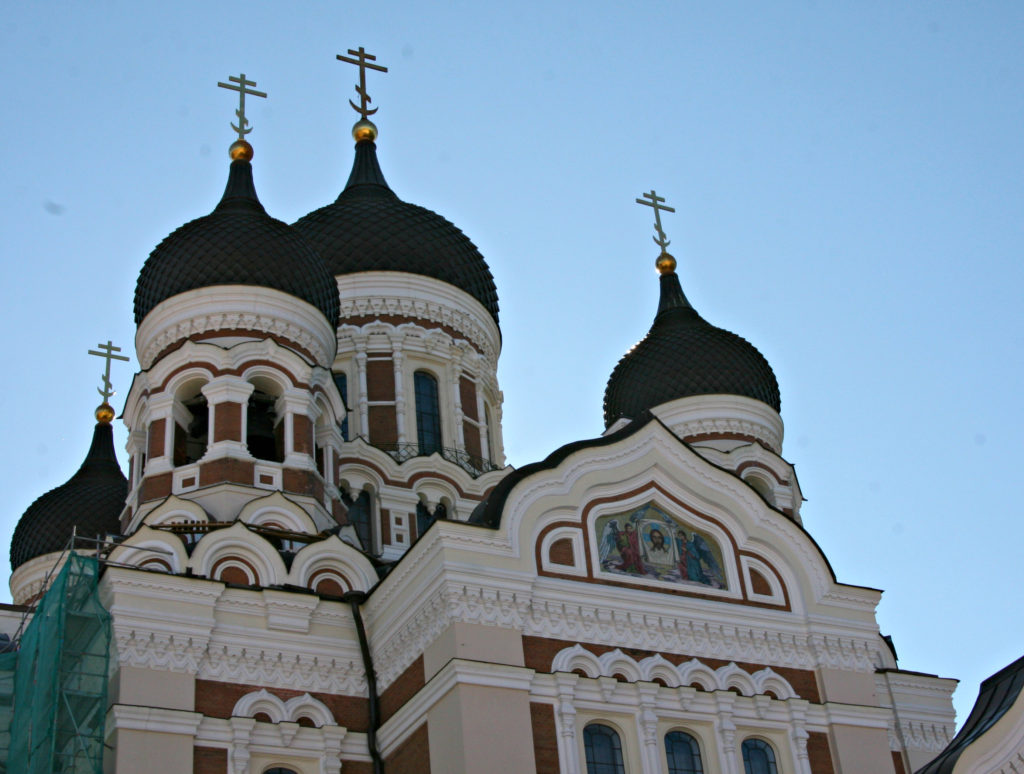
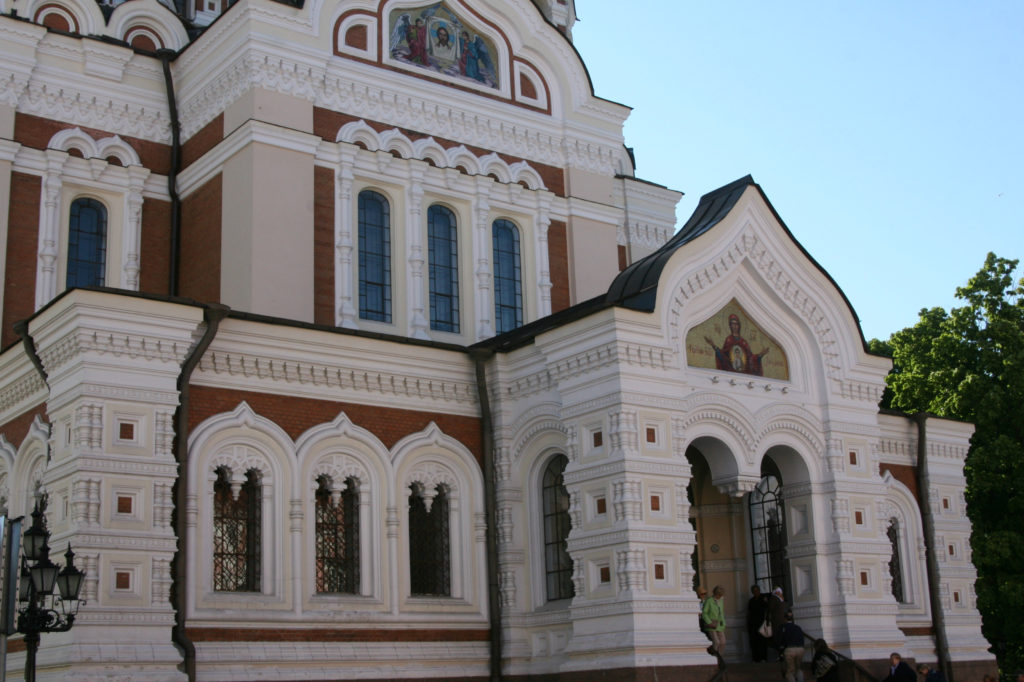
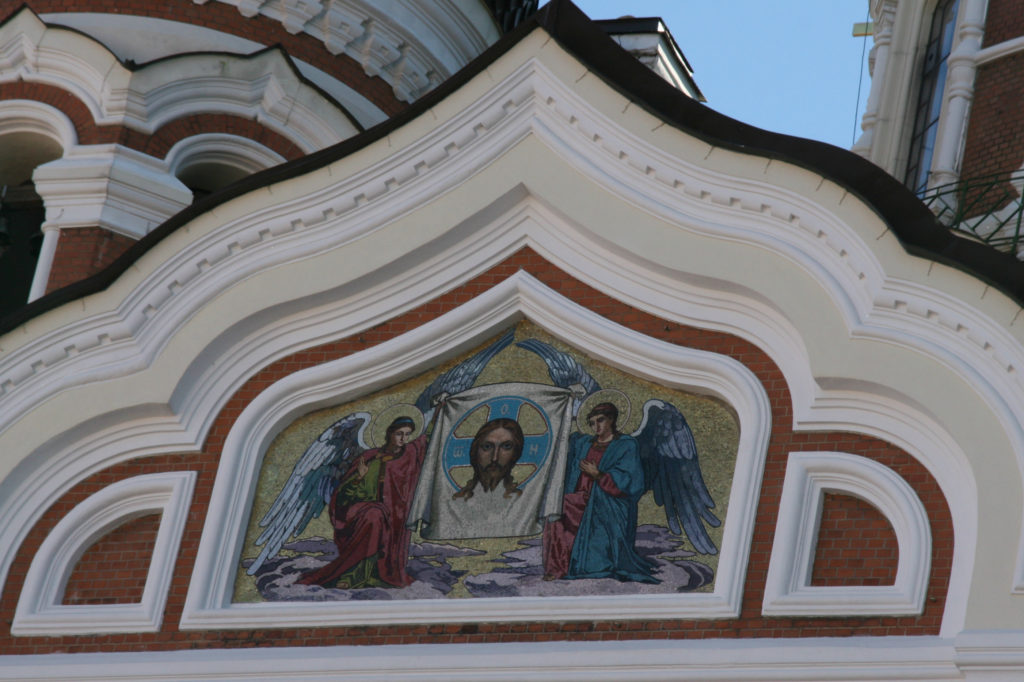
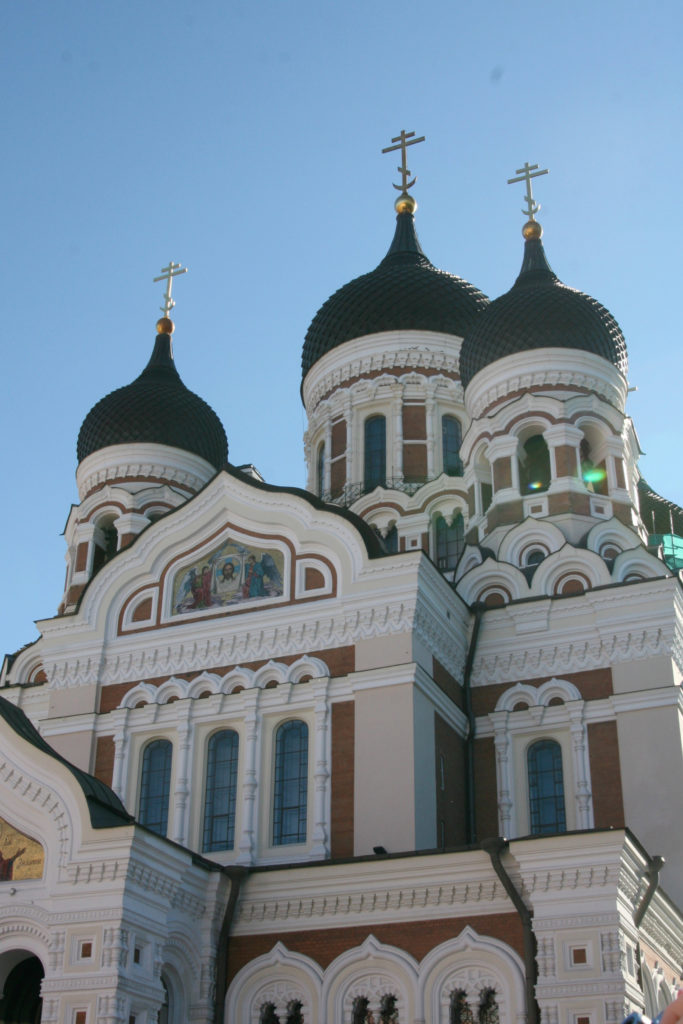
The next church is St. Mary’s Cathedral, more commonly known as the Dome Church. It was originally built of wood and is thought to have already existed in 1219. It was replaced by a stone church in 1240 and then by a larger church which was completed in the 1430s. It was damaged in a fire and restored in 1686. The sarcophagi of past rulers are within the cathedral. When originally built, it was a Catholic church but in 1561 became Lutheran.
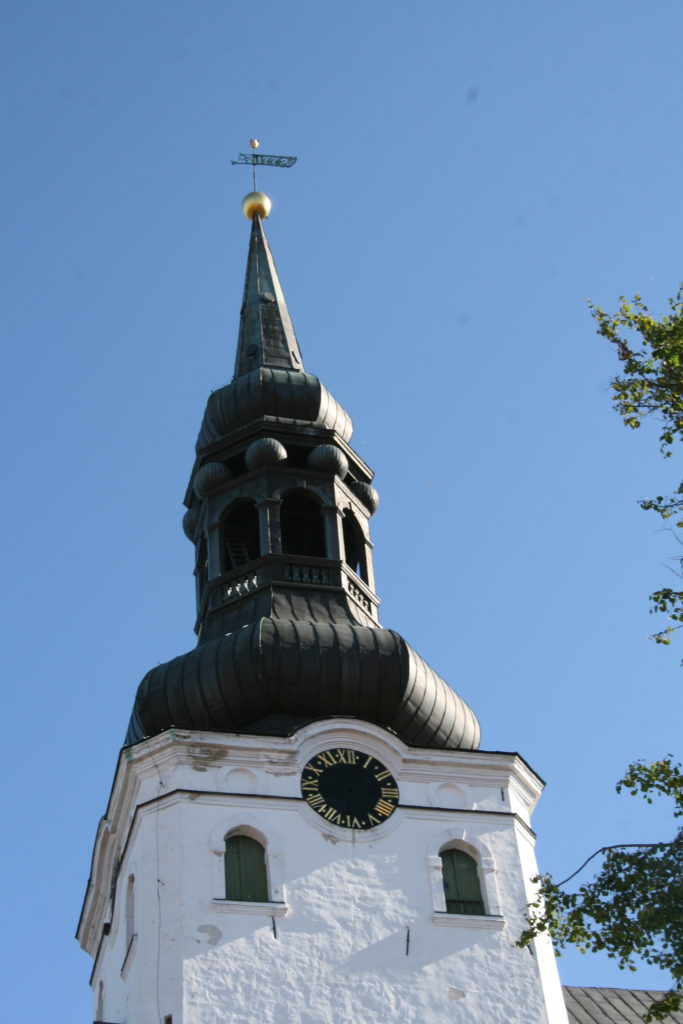
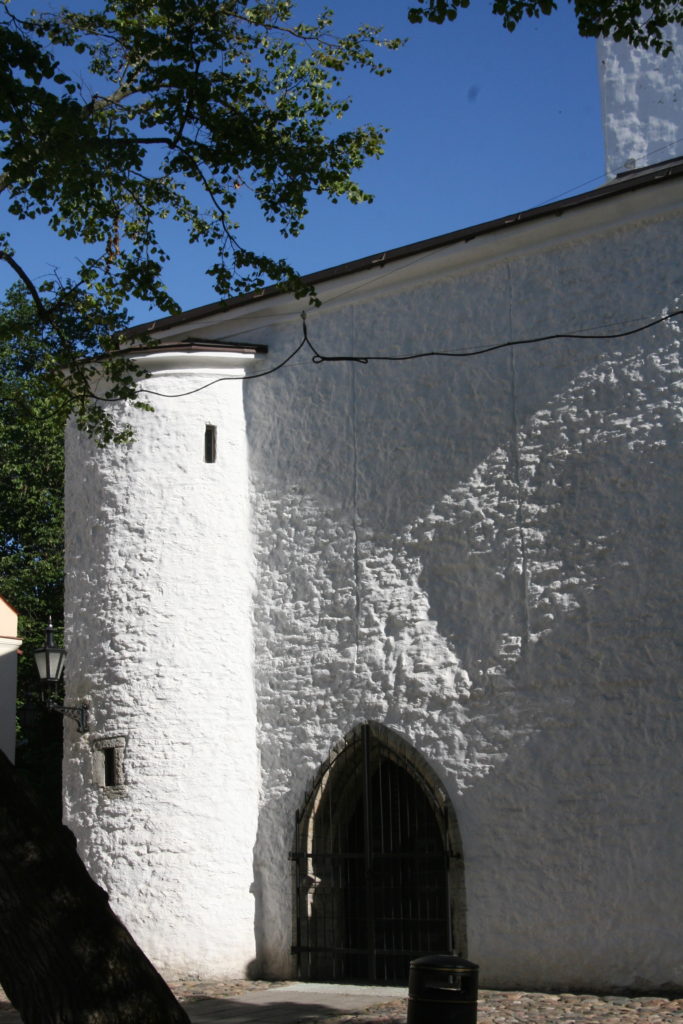
The next church is the St. Nicholas Church and is dedicated to St. Nicholas who is the patron saint of fisherman and sailors. It was damaged during World War II and then restored. Today it serves as a museum. Pictures of the church follow, including a statue of St. Nicholas.
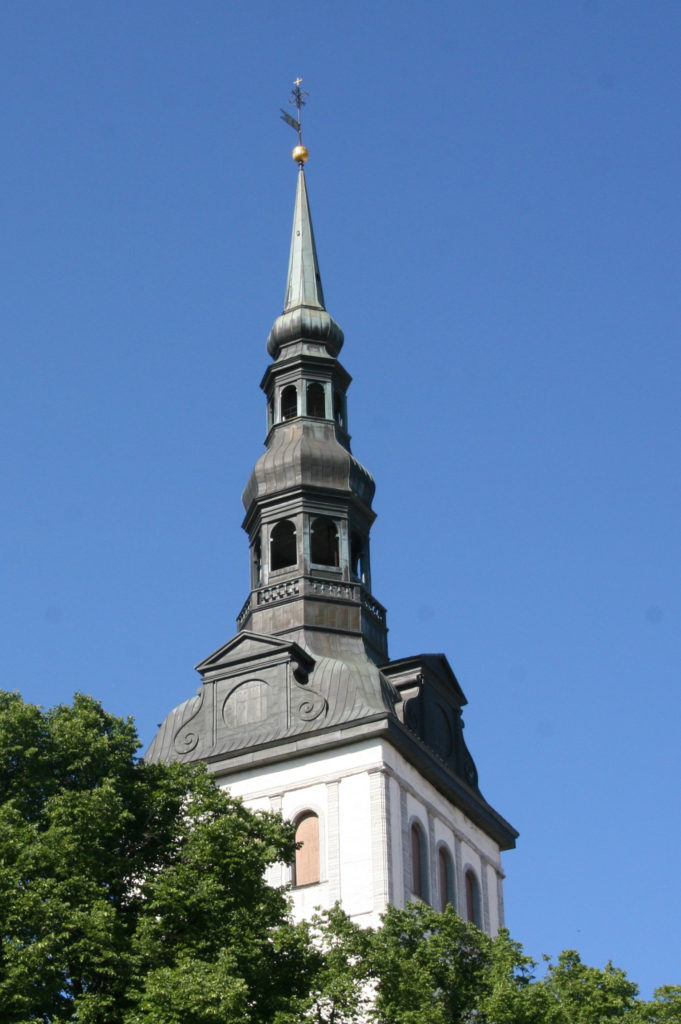
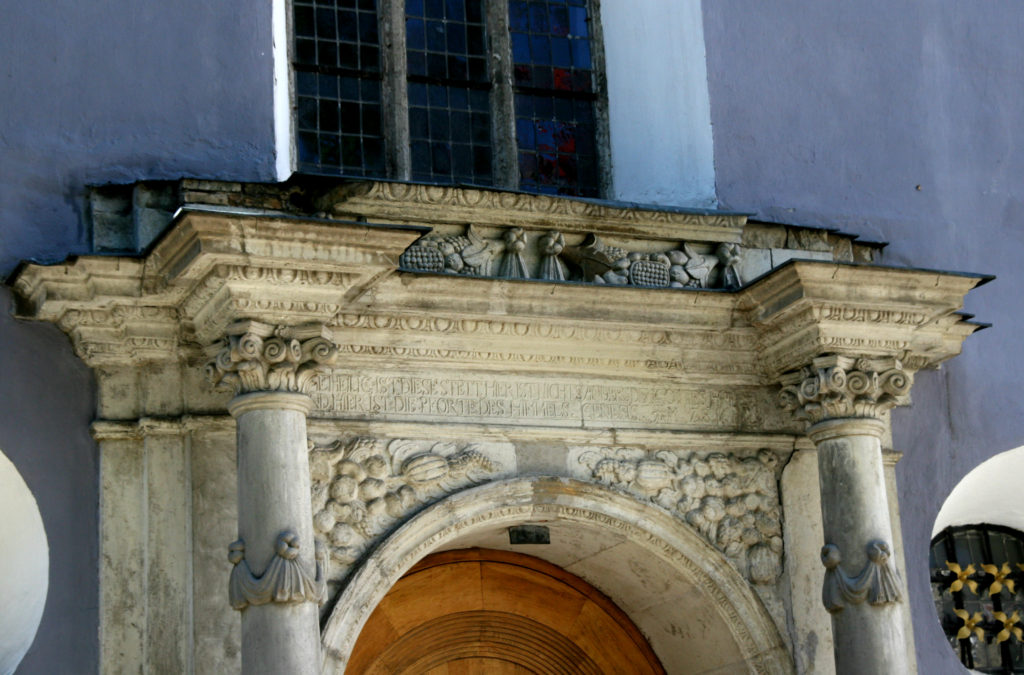
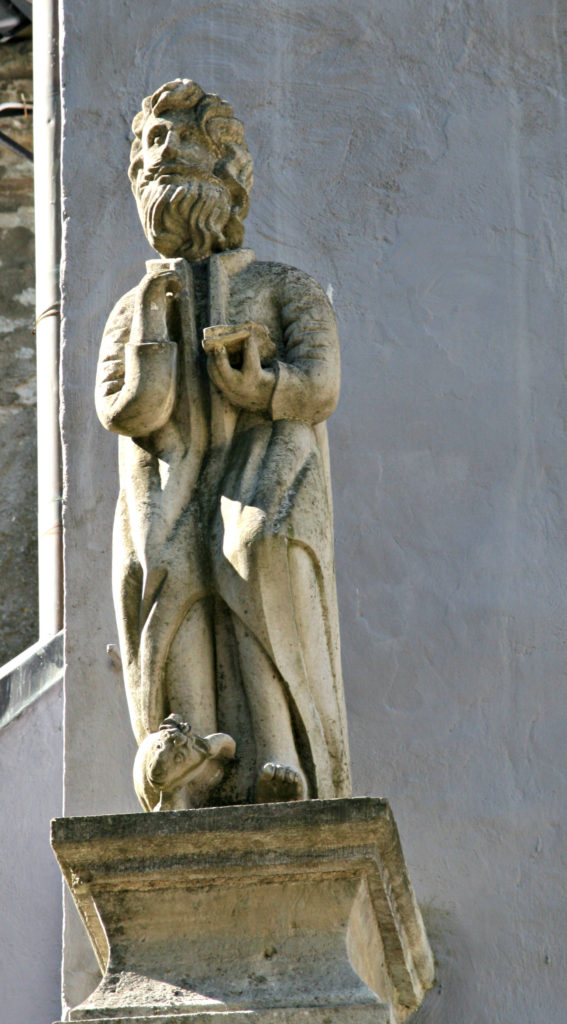
I have included just a few more pictures in this last section. The first is the Holy Spirit Church which dates back to the 14th Century. It was the primary church of common people during medieval times and after the Reforamtion, the first church where sermons were delivered in the Estonian language rather than in German.
The next church is St. Olaf’s, named for King Olaf II of Norway. Written records found referring to the church date back to 1267. It was rebuilt during the 14th Century. The steeple may have been used as a maritime signpost making Tallinn visible to ships out at sea. From 1944 to 1991, the Soviet KGB used the spire as a radio tower. Today the church serves people of the Baptist faith.
The final picture, the building with a sign reading “Peppersack,” probably dates back to the 1200’s. This would have been a typical home for a merchant. The family would live on the first floor. There was a hoisting mechanism that raised supplies to the second floor which served as a storeroom.
As I mentioned at the beginning of this post, we only spent a few hours in Tallinn and found it very interesting. We would like to return and spend more time here. I did look at the Tauck tours and found two where the itinerary includes an overnight in Tallinn – Russian Glories, Baltic Treasures and A Week in the Baltics. If you have the chance to come to Tallinn and have an interest in history, I think you would enjoy visiting.
